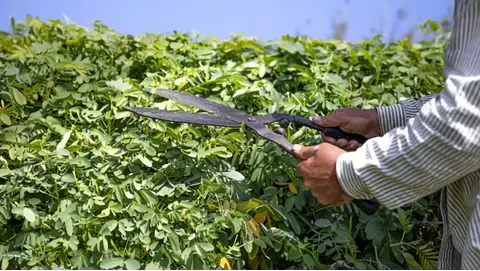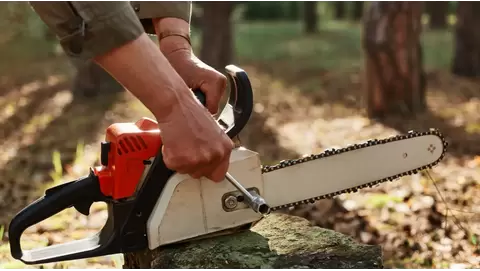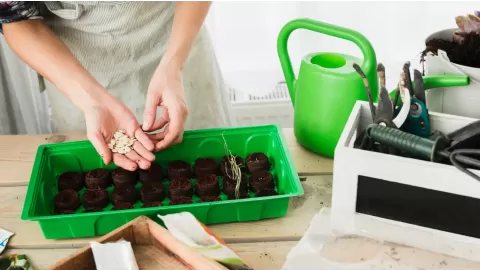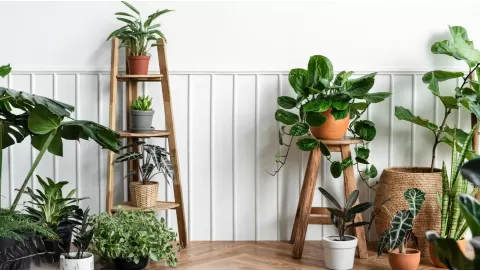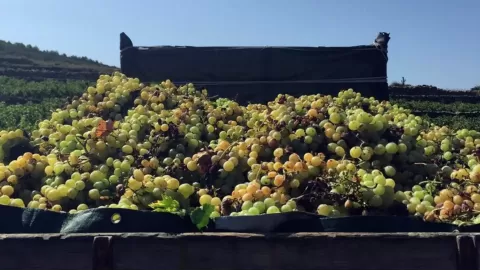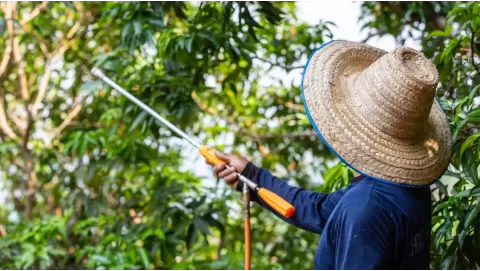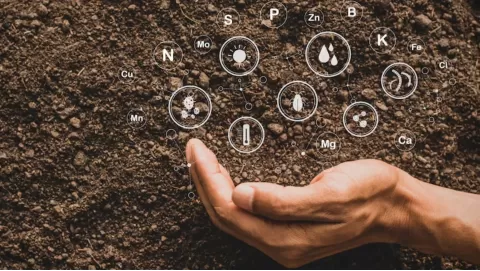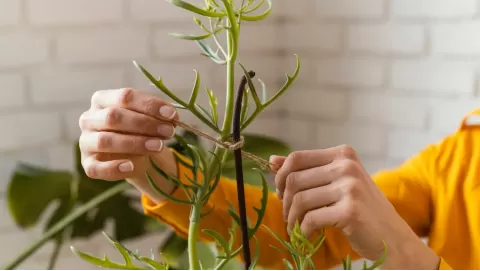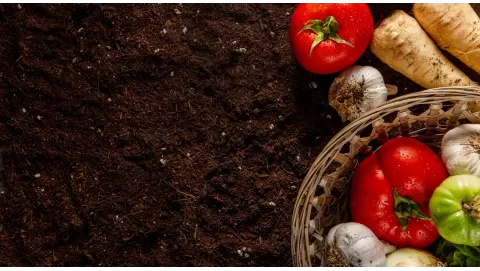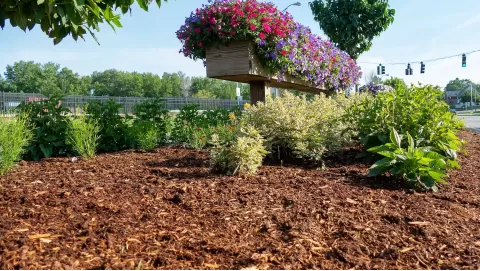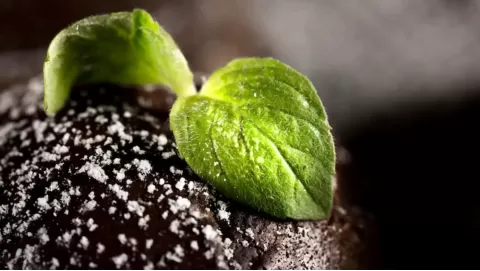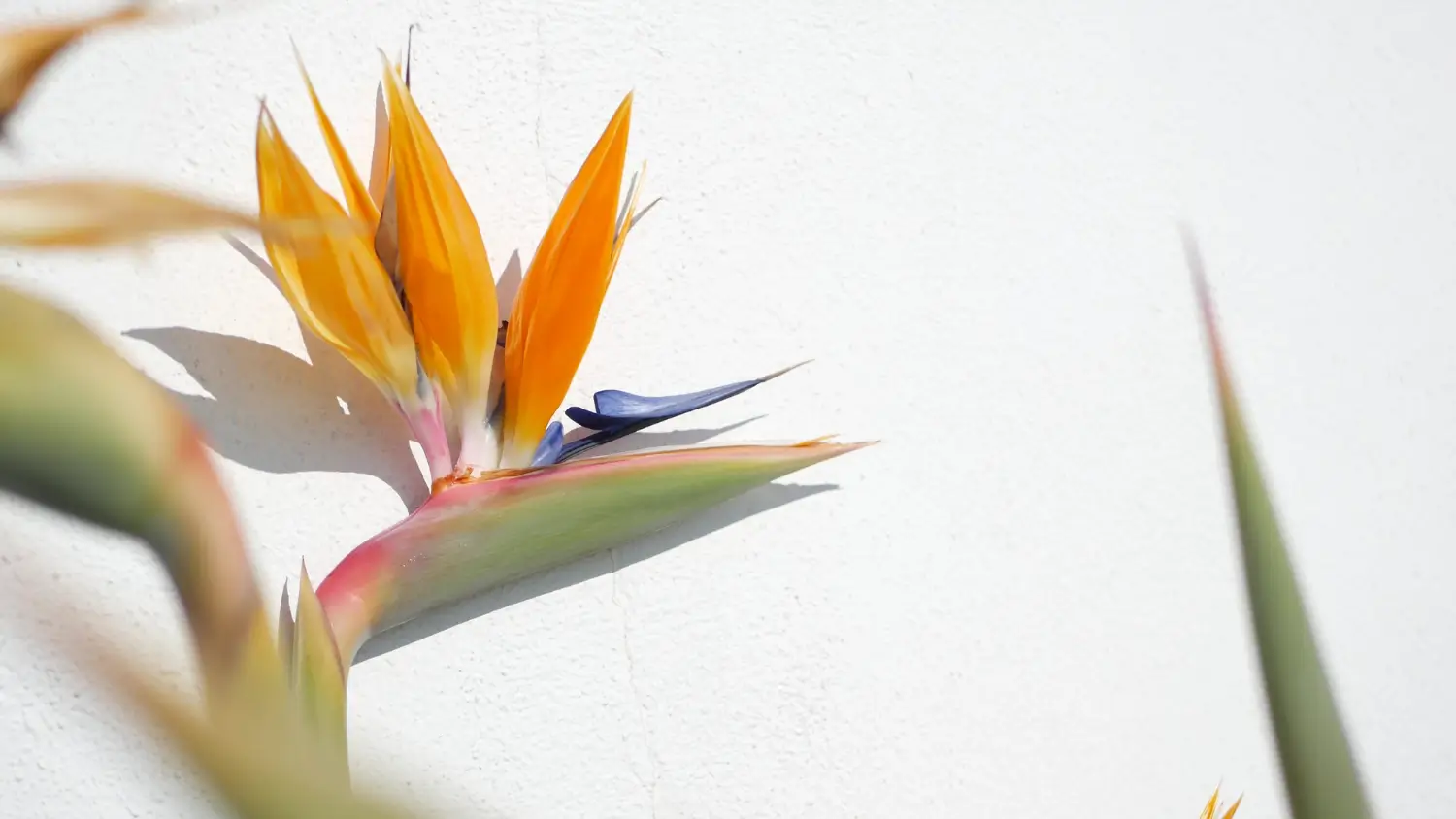
White Bird of Paradise care: Tropical elegance for your space
Plants are important for making lawns and gardens look lively and pleasant. They can make spaces beautiful, clean the air and are a calming presence. The right plants can energize any space, be it a large garden or a modest indoor area. One excellent choice is what it’s generally called: White Bird of Paradise.
- What: The White Bird of Paradise (*Strelitzia nicolai*) is a tropical plant known for its large, banana-like leaves and elegant silhouette.
- Ideal For: Adding a lush, tropical vibe to large indoor spaces or patios in warm climates.
- Light: Thrives in bright, indirect light; tolerates some direct sunlight.
- Watering: Keep the soil consistently moist but not soggy; reduce watering in winter.
- Soil: Use a well-draining potting mix enriched with organic matter.
- Pro Tip: Wipe leaves with a damp cloth to remove dust and promote better light absorption.
The White Bird of Paradise – or Strelitzia nicolai is a tropical plant and is used for decoration purposes, featuring large, banana-like leaves and white and blue flowers that look like the head of a bird. And that’s how the plant got its erroneous name. It’s popular for a reason: It’s drought-tolerant, pest-resistant, and easy to take care of.
Growcycle offers a variety of indoor plants for homes and gardens alike, and the White Bird of Paradise is no different. Read on for useful details about the White Bird of Paradise, such as its characteristics, advantages, and care requirements.
Botany of White Bird of Paradise
The White Bird of Paradise is a stunning evergreen plant, also known as the wild banana or giant white bird of paradise. Its blue-green leaves with red veins and bright orange and blue flowers look like birds in flight. Here are some of its botanical attributes.
1. Scientific Classification
- Kingdom: Plantae
- Order: Zingiberales
- Family: Strelitziaceae
- Genus: Strelitzia
- Botanical Name: Strelitzia nicolai
- Common Name: Giant white bird of paradise, wild banana
- Plant Type: Herbaceous perennial
2. Physical Characteristics
- Leaves: Long, grey-green leaves which are up to 1.8 m (5 ft 11 in) wide. The leaves are spread out like a fan at the top of the stem.
- Flowers: The plant has clusters of flowers, or inflorescences, on the stalk. The flowers have a dark blue bract, white sepals, and a bluish-purple "tongue". Individual flowers may be up to 7.1 inches (18 cm) high by 18 inches (45 cm) long, and are typically held just above the point where the leaf fan joins the stem.
- Stem: The plant possesses a massive and woody stem; the plant is a monopodial stem that can reach 7 to 8 m (23 to 26 ft).
3. Origin and Habitat
- It is one of three larger-statured species of the Strelitzia plant. It occurs in evergreen coastal forests or in bush in eastern South Africa, from Gonubie to southern Mozambique.
- It is also found in Mozambique, Botswana, Zimbabwe and naturally in eastern Mexico.
4. Growth and Cultivation
- White Bird of Paradise thrive indoors and outdoors in warm and frost free regions.
- This plant prefers fertile, acidic soil that is continually moist but well-drained. It can grow in full sun or partial shade. It can also perform just fine in areas of lower rainfall, as long as they can get it near the coast (or have a reliable marine layer year-round).
5. Propagation
- This plant typically multiplies by dividing clumps or from offsets. Seeds are less frequently employed in their cultivation. These plants spread out in years to flower.
- In ideal conditions, they will self-seed readily. Their invasive root systems need to be kept away from structures.
Types of White Bird of Paradise
There are different types of White Bird of Paradise, each with unique features:
| Type | Scientific Name | Height | Leaf Features | Flower Features | Adequacy for Indoor Environment | Adequacy for Outdoor Environment |
|---|---|---|---|---|---|---|
| White Bird of Paradise | Strelitzia Nicolai | 20-30 feet outdoors, 5-7 feet indoors | Large, banana-shaped leaves | Bird-like white flowers with blue accents | Best for large spaces | Flourish in tropical and subtropical areas |
| Orange Bird of Paradise | Strelitzia reginae | 3-6 feet indoors | Narrow, large leaves | Bird-shaped flowers in vivid orange and blue | Best for indoor spaces | Ideal for warm and temperate areas |
| Giant Bird of Paradise | Strelitzia alba | 20-30 feet outdoor | Large and wide leaves | Large and white flowers | Not suitable | Prefer outdoor settings |
| Narrow-Leaf Bird of Paradise | Strelitzia juncea | 4-6 feet | Narrow, reed-like leaves | Small orange and blue flowers | Best for compact areas | Perfect for arid areas |
Benefits of Growing White Bird of Paradise in the Garden
Growing the White Bird of Paradise in a garden offers many benefits. Here are some of the main advantages:
- Striking Appearance: This plant is a shiny leaf tree reminiscent of a tropical umbrella. Its white flowers are stylish and sculptural, the perfect touch of the exotic.
- Indoor and Outdoor Versatility: It is suitable for sunny gardens and bright indoor spaces, so the decoration of balconies, courtyards, and families makes a good choice! This is so cute for your home or office. Its versatility makes you feel a part of Nature.
- Low Maintenance: White Bird of Paradise is perfect for beginners or experts, as it is highly tolerant of neglect and grows well even under various indoor conditions.
- Fast Growth: This plant will grow quickly. Its lush tropical texture conjures instant exotic appeal. It's a great choice for anyone looking to quickly spiff up a room with a little bit of green.
- Purify Air: The White Bird of Paradise naturally cleans the air using broad leaves that help absorb indoor pollutants, such as a living filter. This ornamental plant can improve a home's air quality and beauty.
- Attract Wildlife: This plant is attractive to wildlife. The bright flowers and thick leaves attract birds and pollinators. They can choose a plant that will also look great in the garden and will help local wildlife.
- Drought Tolerance: White Bird of Paradise does well with resisting drought. It grows well on very little water so it suits arid zones and gardeners who don’t want to constantly water a garden bed.
- Reduce Stress: Stress-busting plant It can act as a stress reliever. Its full leaves and height can be useful in a soothing indoor environment. This kind of houseplant reduces anxiety and promotes relaxation, studies show.
- Allergy Relief: White Bird of Paradise can cleanse your air of toxicants such as benzene, formaldehyde, toluene, and xylene. Filtering out these pollutants could potentially alleviate allergy symptoms, so it’s a great pick for those with allergies.
- Symbol of Paradise and Freedom: This plant also symbolizes freedom and beauty. Its improved height makes it a true paradise feel wherever the location may be. This is a plant that epitomizes the tropical, exotic look of the free spirited goddess.
How to Propagate White Bird of Paradise?
Here is a simple guide on how to propagate the White Bird of Paradise:
1. Propagation by Division
The following is the most popular and simplest:
- Prepare the Plant: Gently remove the plant from the pot, loosening the roots so they can spread and grow.
- Divide the Root Ball: Check out the root ball and see if it naturally divides into sections. Pull apart these sections with your hands or a sterile and sharp knife, making sure each cutting has some healthy roots and at least one growing stem.
- Replant: Plant each division in a pot or directly in the ground with well-drained soil. Water well after planting.
- Care for New Plants: New leaves should be placed in a bright location with indirect sunlight, and the soil should be kept moist (but not waterlogged).
2. Propagation by Seeds
It is a slower method, but it can work:
- Collect or Buy Seeds: Gardeners can bag seeds from an existing White Bird of Paradise plant or purchase them from a reliable seller.
- Soak the Seeds: If you want to, you can soak the seeds overnight or for up to 48 hours in warm water to soften the tough outer shell and speed germination.
- Plant the Seeds: Sow the seeds 1 inch deep in seed-starting mix. They will need a warm spot with bright, indirect sun.
- Be Patient. Germination may require 1-3 months. During this time, provide moist soil and constant warmth.
- Transplant: Once the seedlings are sturdy, transplant them to bigger pots or the garden.
White Bird of Paradise Plant Care
White Bird of Paradise plant care is easy when you use the proper methods. Here is what you need to know to keep that plant healthy and alive:
1. Light
The White Bird of Paradise thrives in bright light, so it will do best in a sunny spot, but don't set it in direct sunlight, as that will scorch the leaves. It can survive in medium light, but will grow more slowly in medium light.
Allow the plant daily bright, indirect light, as it grows toward it. Stash it away from air vents and drafts. If natural light is not plentiful, the gardener can provide the plant with artificial light to assist in its growth. They can also turn the plant every so often to encourage growth, since it will lean toward the light.
2. Temperature
This plant can be cultivated by gardeners indoors in polytunnels or outside. It works great between 65 and 80 degrees Fahrenheit. Except it does not respond to raw hot or cold air very well. Don’t place it near air conditioning or heating vents.
3. Humidity
The plant must be misted once in a while to keep its leaves from getting dusty. A homeowner can do this with an automated mister and microfiber dusting gloves.
Consistent leaf dusting allows the plant to photosynthesize correctly. To undertake this, the homeowner can simply mist the leaves and wipe each one with a microfiber cloth while looking to the underside for bugs.
4. Feeding
Feeding is important to keep the white bird of paradise flourishing and healthy. Use diluted or all-purpose houseplant fertilizer monthly during the spring growing season or early fall. Do not overfeed the plant: too much fertiliser can result in an accumulation of excess salt in the soil, leading to leaf burn.
5. Watering
How often should you water white bird of paradise plants? The plant needs different amounts of watering depending on where it is located, what the humidity levels are, the season in relation to temperature, and the amount of heat that is being placed near it. Homeowners can tell when and how much to water the plant by keeping a close eye on it.
Water the plant once a month. Use a spray bottle, watering can, drainage holes or watering measurement or cup as a guide, to give under 16 ounces (473 ml) of water each round. To get best results, use distilled water as opposed to tap water so there is no mineral buildup and to keep the leaf’s edges from browning.
Here are some steps to water the plant well:
- Gently add the filtered water at the base of the plant. If anything direct water to the middle of the plant and do not let water flow over the edge of the root ball and desiccate the center roots.
- Make small holes in the gravel and dirt using something blunt, like a knife without a blade or the end of a pencil. It will also stimulate roots to grow down the soil profile, for the use of cooler and moist soil.
- Check soil moisture by sticking a finger about half an inch into the soil. Do not water if the mix is damp. If they’re bone dry, follow the instructions included and water.
- Homeowners can also use a soil probe to check moisture farther down in the soil and aerate overly wet soil.
- Just don’t let your White Bird of Paradise get bone-dry and you’re bound to keep your plant healthy in the planter without it getting overly soggy to start deteriorating.
6. Keep them Outdoors
Strong winds are no match for this plant. It is manageable in pots and containers on balconies or backyards as long as it is in a shaded area and not directly exposed to sunlight.
Homeowners should put a waterproof saucer underneath if they use an organic container. This will save their floors, because moisture can ruin wooden floors and carpets.
7. Pruning
White Bird of Paradise flowers can last up to three weeks before the petals drop and the flowers wither away. Remove any old or damaged leaves to maintain plant health. This is the most effective method for thinning the leaves. Gardeners can pull the leaves or remove them with sharp tools. Don’t forget to rinse tools between a range of plants.
If a leaf appears largely healthy, do not pull it off the plant. If you have lavender that is so much bigger than it was, but you don’t want to hack it down, reach for loppers, hand pruners, or a pruning saw in early spring.
Don't use hedge trimmers because they cut unevenly. Gardeners can snip back all leaves and stems to about a few inches above the ground. If the plant still seems crowded, try using long-handled pruners to clip out some of the stems and leaves.
8. Potting and Repotting
The White Bird of Paradise is a spreading plant that doesn't bloom until it becomes large enough. A 10-inch pot is fine for a plant 3 to 4 feet tall, and a 14-inch pot is usually perfect for a plant 5 to 6 feet tall. Gardeners should repot it into a larger pot each spring.
Gardeners can divide it after it has finished growing or blooming once, but don’t do this too often, as the crowded plants make the most flowers. Just bear in mind that re-potting can mess with your lily’s blooming cycle.
Common Problems and Solutions of White Bird of ParadiseIt is a pretty chill plant that doesn’t usually have many problems. However, it struggles with root rot and some pests if it doesn’t receive the right care. Here are some common issues gardeners might encounter while caring for it:
1. Rotting or Browning of Leaves
- Cause: Excessive water, water-logged soil, fungus infection, rotting smell
- Solution: Lift root ball, cut off any black or moldy sections of the rhizome, use a fungicide as directed, then repot in a new clean container with fresh, well-draining soil.
2. Curling Leaves
- Cause: Underwatering
- Solution: Water the plant thoroughly, ensuring that excess water drains out of the bottom of the pot. This is to make sure all the roots are getting enough moisture. And make sure that the plant isn’t standing in water, because wet soil can lead to other issues.
3. Yellow Leaves
- Cause: Dryness and no proper food
- Solution: Water the White Bird of Paradise enough and fertilize appropriately.
4. Slits or Breaks in Leaves
- Cause: The plants have been outside too long.
- Solution: White bird of paradise plants thrive both indoors and outside, but don't leave them outside for long periods of time, or the leaves can split and break.
5. Pest Infestation
- Cause: Aphids, scales, and whiteflies are common
- Solution: Use insecticidal soap and pesticides
FAQs
Is White Bird of Paradise indoor?
Yes, people love the White Bird of Paradise as a houseplant for its stunning tropical leaves and the fact that it tolerates indoor life. It thrives best in bright, indirect light and warm temperatures, but it can also be grown outdoors in ideal climates as long as it receives enough sunlight and is protected from frost.
Are White Birds of Paradise rare?
White Birds of Paradise are not rare, however, since they are widely grown as both houseplants and outdoor decorations. Their incredible tropical vibe, combined with a large size, really makes them pop, and people love having them around. They tolerate being cared for and will grow well; their leaves resemble lively bananas.
What does the White Bird of Paradise symbolize?
The White Bird of Paradise symbolizes freedom, hope, and the ability to bounce back, with its tropical feel and resemblance to a bird. It is also associated with beauty, elegance and new beginnings, making it an in-demand option for gifts or decorations that spread positive vibes and appreciation of nature.
The Bottom Line
Strelitzia nicolai White Bird of Paradise. The White Bird of Paradise is a stunning indoor plant that boasts stunning, large leaves which fan out into a paddle shape, looking like an actual bird of paradise! It is easy to care for, versatile, and fragrant, and it helps to clean the air — all reasons why the plant is a favorite among gardeners and homeowners. The paradise and freedom symbolized by the plant are to give the impression of peace.
Growcycle provides a large selection of indoor plant seeds, such as the White Bird of Paradise, to help you beautify your homes and gardens. Plant lovers might go to it for a pretty lawn or garden.
Disclaimer: This material is for informational purposes only and should not be relied on for legal, medical, financial, or any other form of professional advice.
Sources:1. Livelyroot - How to Care for a Bird of Paradise Plant: A Comprehensive Guide
2. Outsideinco - White Bird of Paradise Guide: Bio, Care, & Facts



